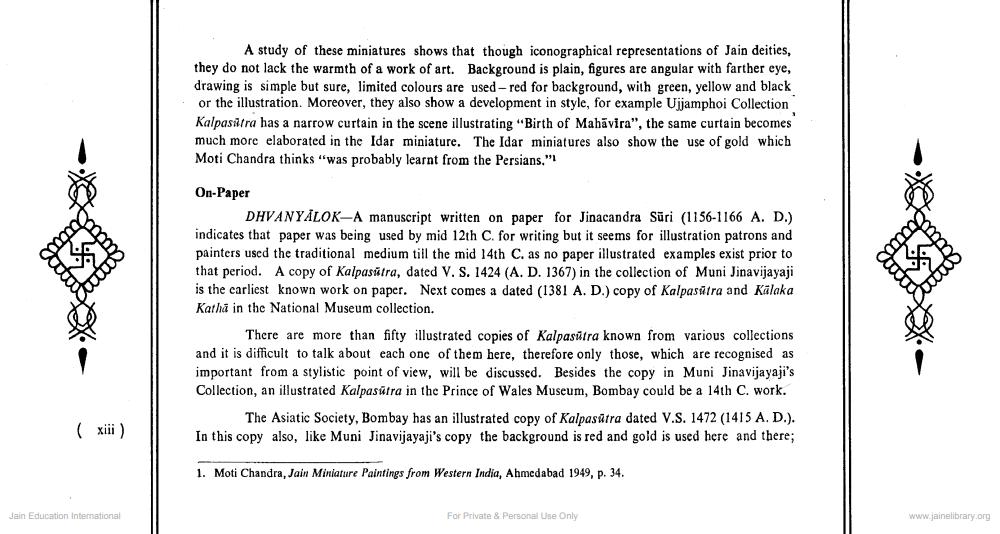________________
A study of these miniatures shows that though iconographical representations of Jain deities, they do not lack the warmth of a work of art. Background is plain, figures are angular with farther eye, drawing is simple but sure, limited colours are used-red for background, with green, yellow and black or the illustration. Moreover, they also show a development in style, for example Ujjamphoi Collection Kalpasitra has a narrow curtain in the scene illustrating "Birth of Mahavira", the same curtain becomes much more elaborated in the Idar miniature. The Idar miniatures also show the use of gold which Moti Chandra thinks was probably learnt from the Persians."
On-Paper
DHVAN YALOK-A manuscript written on paper for Jinacandra Sūri (1156-1166 A. D.) indicates that paper was being used by mid 12th C. for writing but it seems for illustration patrons and painters used the traditional medium till the mid 14th C. as no paper illustrated examples exist prior to that period. A copy of Kalpasútra, dated V. S. 1424 (A. D. 1367) in the collection of Muni Jinavijayaji is the carliest known work on paper. Next comes a dated (1381 A. D.) copy of Kalpasutra and Kalaka Katha in the National Museum collection.
There are more than fifty illustrated copies of Kalpasūtra known from various collections and it is difficult to talk about each one of them here, therefore only those, which are recognised as important from a stylistic point of view, will be discussed. Besides the copy in Muni Jinavijayaji's Collection, an illustrated Kalpasūtra in the Prince of Wales Museum, Bombay could be a 14th C. work.
The Asiatic Society, Bombay has an illustrated copy of Kalpasātra dated V.S. 1472 (1415 A. D.). In this copy also, like Muni Jinavijayaji's copy the background is red and gold is used here and there;
(xiii)
1. Moti Chandra, Jain Miniature Paintings from Western India, Ahmedabad 1949, p. 34.
Jain Education International
For Pelvate & Personal use only
www.jainelibrary.org




